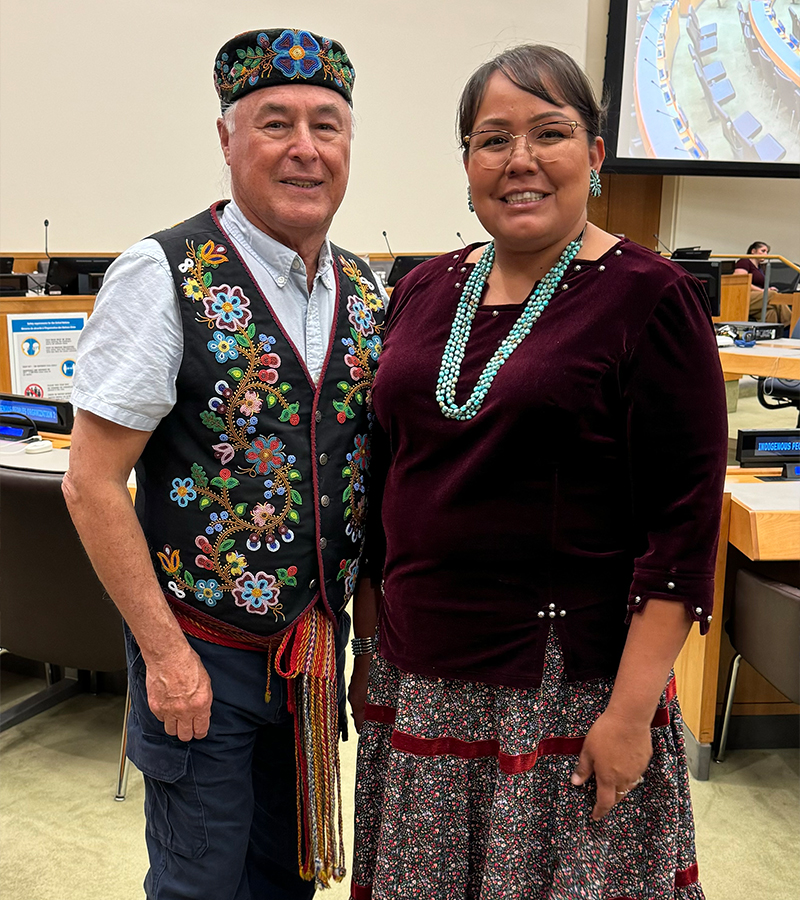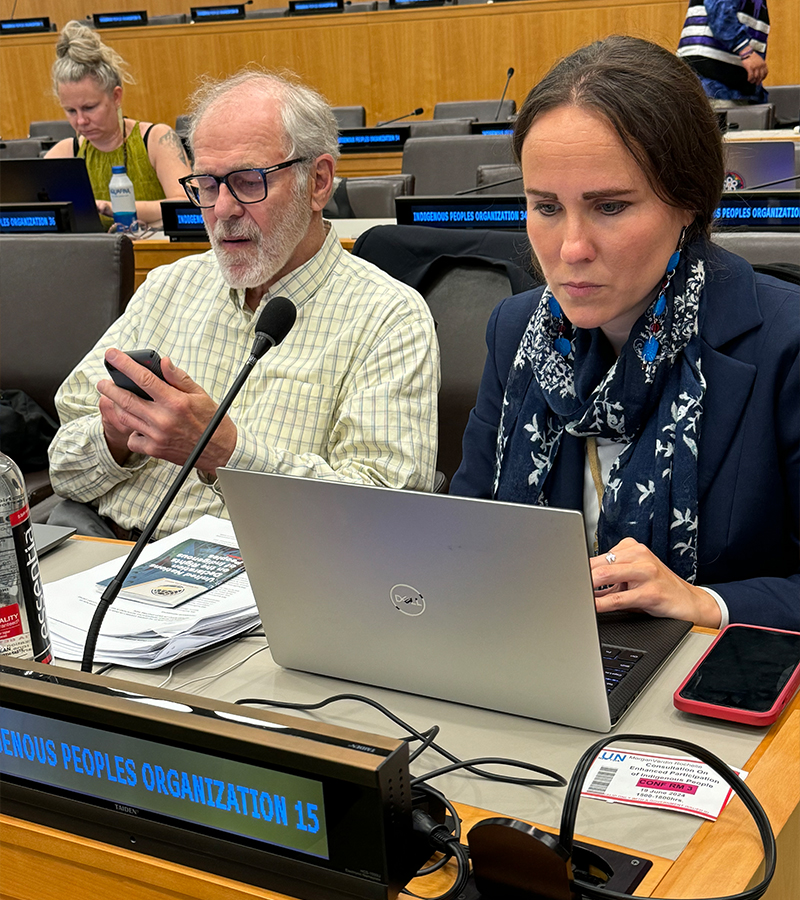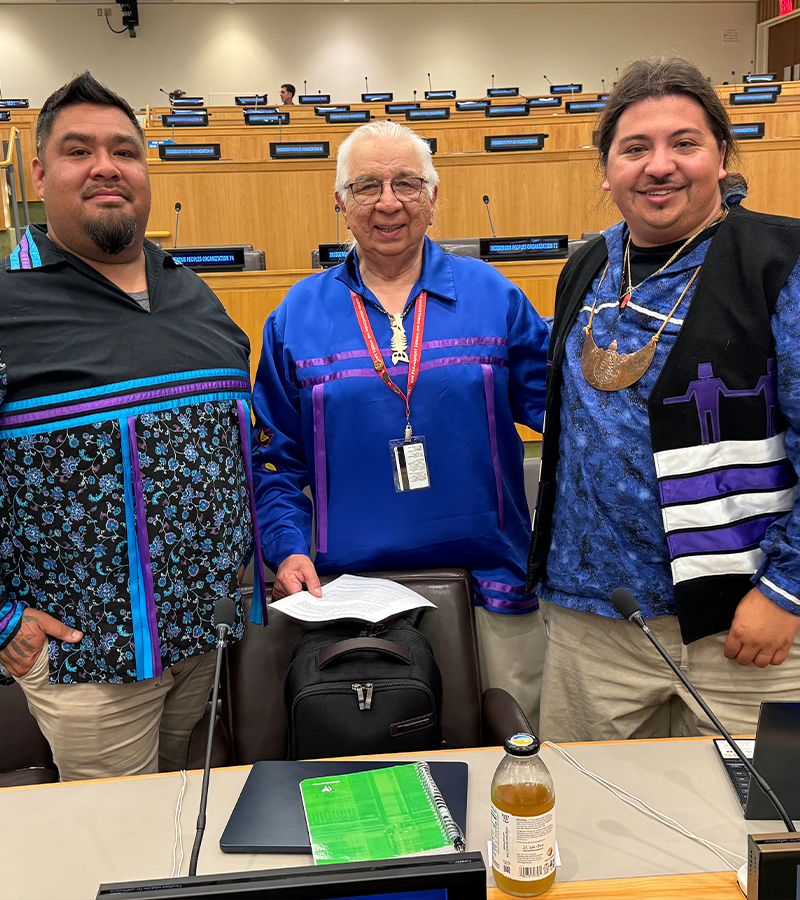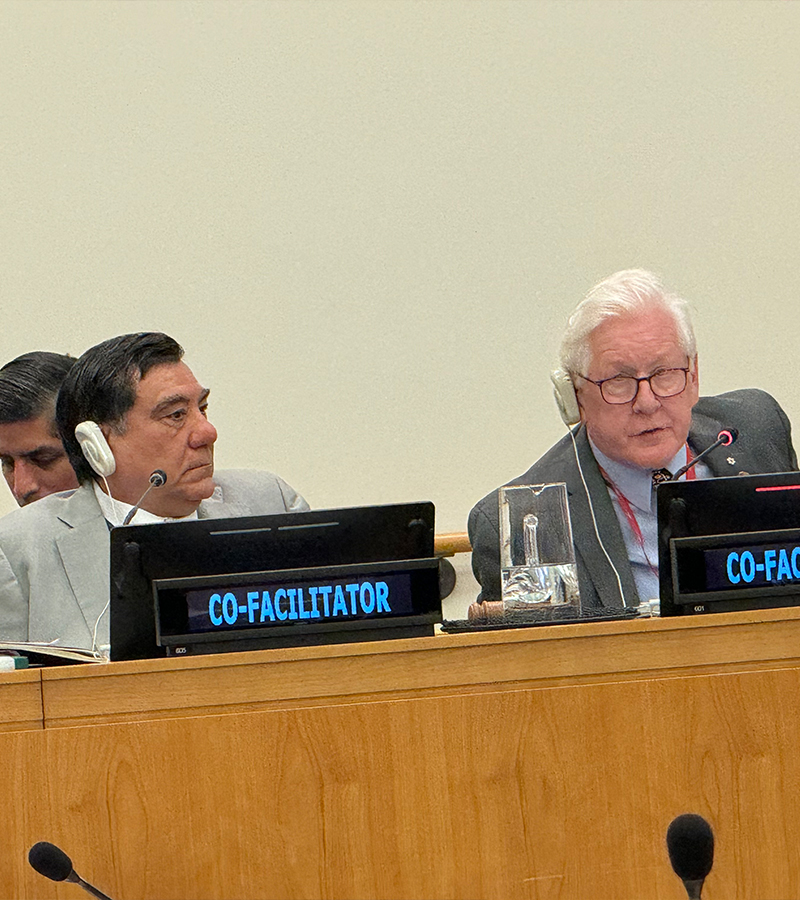- Home
- |
- Our Culture
- Louis Riel
- Métis Firsts in North America
- Métis Minute
- Who are we?
- Métis Nation Database
- Kids' Corner
- I Love to Bead Month
- |
- Departments / Affiliates
- Citizenship
- Culture & Heritage
- Early Learning & Child Care
- Economic Development
- Engagement and Consultation
- Energy, Infrastructure & Resource Management
- Health & Wellness
- Housing and Property Management
- Infinity Women Secretariat
- Louis Riel Capital Corporation
- Louis Riel College
- Louis Riel Institute
- MEDOCare Pharmacy
- Métis Child and Family Services Authority
- Métis Employment & Training
- Métis Justice Institute
- Métis Rights & Constitution
- Michif Language
- Provincial Education
- Red River Métis Business Development Corporation
- Red River Métis Community Resource
- Red River Métis Fur Company
- Red River Métis Veterans
- Riel House
- Sixties Scoop
- Youth
- |
- Government
- |
- Jobs
- |
- News
- |
- Contact
Ambassador Chartier attends meeting at the United Nations
June 25, 2024

(Ambassador Chartier with Crystalyne Curley, Speaker, Navajo Nation)
On Wednesday, June 19th Ambassador Clément (Clem) Chartier participated in a meeting dealing with "Participation of Indigenous Peoples' representatives and institutions in relevant United Nations meetings on issues affecting them" held at the United Nations in New York city.
Ambassador Chartier was representing the interests of the MMF, the National Government of the Red River Métis and was pursuing the best possible outcome which would serve the interests of our people, nation, and government.
This process began in 2014 the year in which the United Nations General Assembly (UNGA) held a special session on Indigenous peoples called the "World Conference on Indigenous Peoples". Out of this session came a new initiative by General Assembly seeking the enhanced participation of Indigenous peoples in the United Nations. This initiative is being led by the President of the General Assembly (PGA) based in New York.

(Kim Gottschalk, NARF and Rochelle Morgan-Verdin, NCAI.)
While various meetings and workshops have taken place since then, in 2017 other bodies within the UN were asked to pursue this objective as well. The only body to take up this initiative is the Human Rights Council (HRC) based in Geneva, Switzerland, which has led to the current two processes taking place simultaneously. This process is being led by the Office of the High Commissioner for Human Rights (OHCHR).
The June 19th meeting is the process undertaken by the President of the General Assembly (PGA) in New York. As reported in the April 2024 report on the Permanent Forum on Indigenous Issues (PFII) held at the UN in New York and posted on the MMF website, the PGA appointed Ambassador Bob Rae of Canada and Ambassador Garcia Toma of Peru as co-facilitators of the process. On June 11th the co-facilitators held a virtual consultation, which led to the June 19th in-person meeting. The co-facilitators are assisted by two Indigenous co-advisors, Claire Charters and Belkacem Lounes.

(Chief Spencer Lyons, Kenneth Deer and B Sonny White, Haudenosaunee delegation.)
The co-facilitators are required to submit their report to the PGA in September. It is expected that the PGA will continue the process, and it is expected that the current two facilitators will be re-appointed.
This process has been very slow, with several issues that remain difficult to resolve. There are 193 member countries making up the UN General Assembly and 7 socio-cultural regions representing Indigenous peoples globally. These socio-cultural regions are: Africa; the Arctic; Asia; Central and South America and the Caribbean; Eastern Europe, Russian Federation, Central Asia and Transcaucasia; North America; and the Pacific.
As can be seen based on the number of UN members and Indigenous peoples worldwide, coming to a consensus on how Indigenous peoples' enhanced participation can be accommodated is not so easily resolved. This includes many countries who do not wish to acknowledge the existence of Indigenous peoples with their borders, let alone their accommodation within the UN. Also compounding this, is the situation where Indigenous peoples' existence is not acknowledged, or whose attempts to organize are opposed by some countries.
As Indigenous peoples and nations, we are experiencing that our respective situations vary considerably throughout the world. While some of us, particularly in North America have governments, others don't even have the right to establish organizations. This is a challenge to finding terms that best describe how we can be accommodated in the UN. The current favoured description by some countries and Indigenous peoples is "Indigenous peoples' representatives and institutions", and by others, such as from democratic countries is "Indigenous peoples' institutions".

(Ambassadors Toma and Rae)
While the Government of the Red River Métis would clearly prefer the use of language that refers to Indigenous governments the next best thing is "Indigenous peoples' institutions", which would include governments, as well as organizations.
Another stumbling block is who decides upon which Indigenous institutions should be accepted to participate within this new UN category. Some States/countries say it should be they who decide, while Indigenous peoples maintain it should be Indigenous peoples themselves, through their own representative bodies.
On the other track, the Human Rights Council (HRC) since 2017 has been meeting with representatives of Indigenous peoples and is seeking ways to enhance their/our participation in the work of the HRC. The Council is made up of 47 Member States elected by the 193 States making up the General Assembly. Elections take place every year and members are elected to three-year terms on a staggered basis. The HRC meets three times a year, from three to five weeks each time, depending on the amount of work before them.
At the April session of the PFII, a side-event was held sponsored by the HRC which announced that a new initiative would be taking place this year, with two intersessional meetings in Geneva, Switzerland; July 18-19 and October 17-18. The issues facing Indigenous peoples, nations and governments are the same as those found withing the UNGA process, but may find more common ground as there are less states involved, and the fact that they deal with human rights issues and are not per se a political forum, such as is the UNGA.
It is expected that the results of the two intersessional meetings will be reported to the OHCHR later in the year or early next year and will then be dealt with by the Human Rights Council.
In terms of Canada's involvement, Crown Indigenous Relations Northern Affairs Canada (CIRNAC) with representatives from Global Affairs Canada has been holding virtual meetings on both processes with Indigenous representatives and other bodies supportive of Indigenous peoples.
